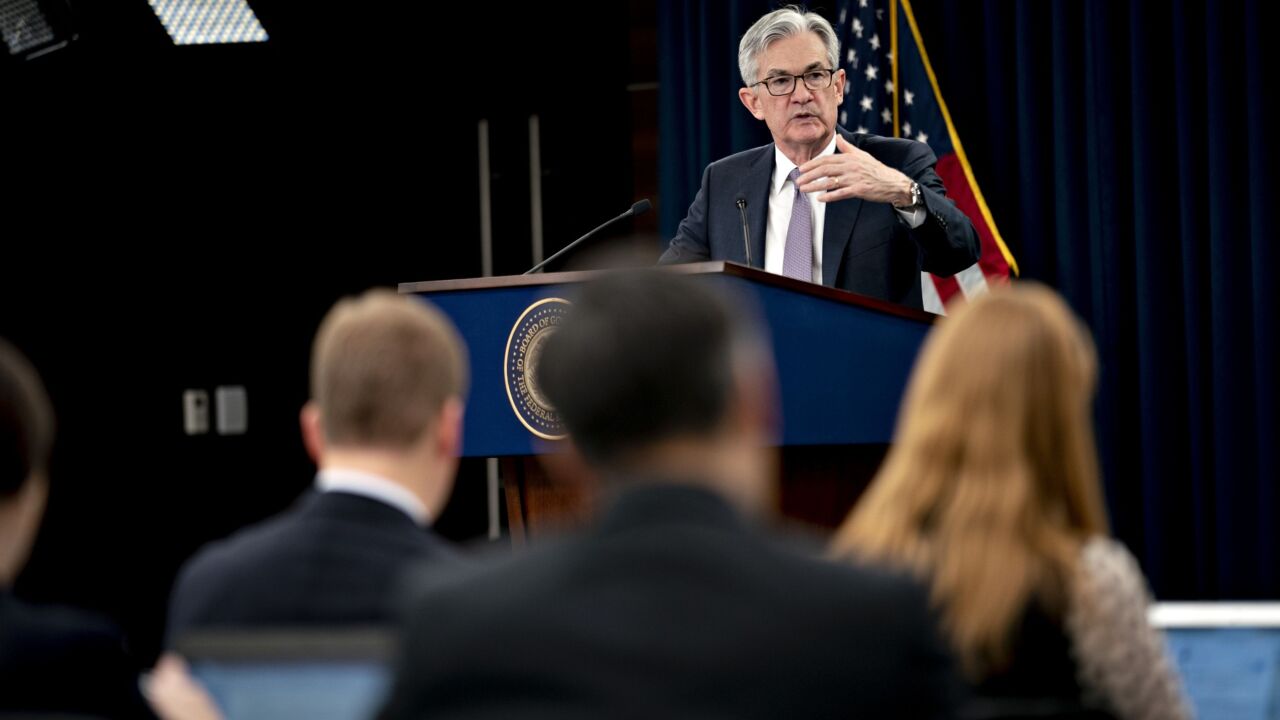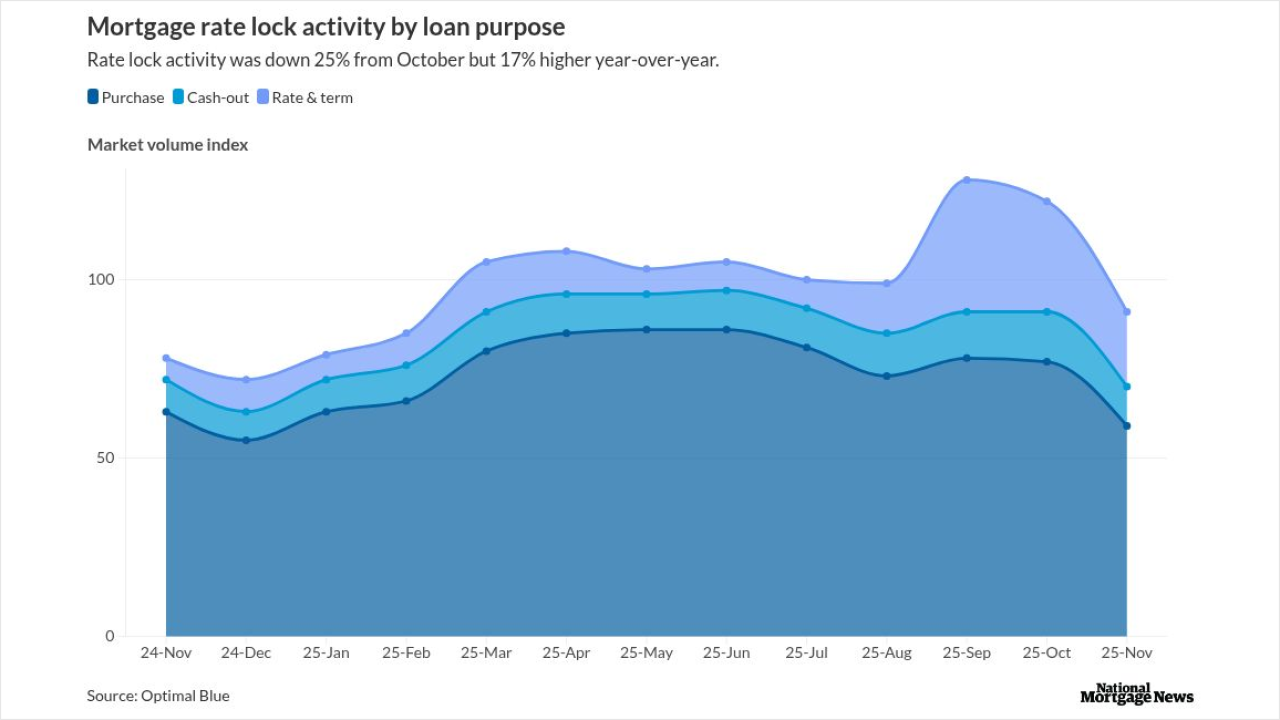WASHINGTON — There was little doubt Tuesday after two regulatory agencies approved changes to the Volcker Rule that banks had prevailed in a long policy fight over one of the cornerstones of the Dodd-Frank Act. The debate immediately turned to whether the agencies had done the right thing, and that is an argument that could endure for some time.
The proprietary trading ban — which was first devised by former Fed Chairman Paul Volcker, then working on behalf of the Obama administration — was implemented as part of the post-crisis regime to prevent banks from making risky short-term bets.
But regulators' effort in May of 2018 to ease the compliance burden and clarify the requirements was met with hostility from banks and consumer groups.
The final rule adopted by the Federal Deposit Insurance Corp. and the Office of the Comptroller of the Currency

“Given the severe narrowing of the scope of financial instruments subject to the Volcker Rule under the final rule before the FDIC board today, the Volcker Rule will no longer impose a meaningful constraint on speculative proprietary trading by banks and bank holding companies benefiting from the public safety net,” said former FDIC Chairman Martin Gruenberg, who remains a member of the agency’s board and voted against the final rule.
For those who agree with Gruenberg — who voted in favor of the original proposal back in May 2018 when he was chairman — the final rule goes even further to weaken Volcker.
“It differs in a big way from the original proposal. The original proposal didn’t calculate the scope of the Volcker Rule based just on the label the banks put on it,” said Marcus Stanley, the policy director of Americans for Financial Reform. “That really is a very good indicator of whether they’re going to trade, but the banks blew up. … They basically got everything they wanted in the final rule.”
Yet others say that while the big banks got most of what they wanted in the final rule, that doesn’t necessarily equate to weakened safety and soundness.
“Is this beneficial for banks in general? Yes, because anytime you streamline something, you clarify it, you simplify it, and it’s going to be easier to implement,” said Joseph Vitale, a partner at Schulte Roth & Zabel.
FDIC Chairman Jelena McWilliams said at Tuesday's board meeting that the Volcker Rule has been one of the "most challenging" post-crisis reforms to implement and remains overly complex.
"Today, the largest banks are subject to many levels of oversight," she said. "On-site examiners are in these banks every day, ensuring the banks are engaged in prudent risk management and have proper internal controls in place."
While much remains to be done on the Volcker Rule — including revising the definition of a “covered fund” that agencies said will be detailed in a subsequent proposal — Volcker 2.0 will ultimately make it easier for banks to understand what falls into the trading ban and what does not, said Keith Noreika, a partner at Simpson Thacher and former acting comptroller of the currency.
“This was sort of a modest step to take the uncertainty and Russian roulette aspect out of the Volcker Rule and really bring it back to its core purpose,” he said.
Still, Stanley and others are sounding the alarm bells.
“This is an industry-friendly administration, and a lot of people in the regulatory system never wanted the Volcker Rule in the first place as part of Dodd-Frank, so they’re taking the opportunity to basically gut it in the backrooms through rulemaking,” Stanley said.
And the proposal to change key components of the Volcker Rule comes as economists have started highlighting signs of an economic downturn and the White House is reportedly scrambling to boost consumer spending, Dennis Kelleher, the president and CEO of Better Markets, said in a statement.
“Added to almost two years of financial deregulation, this is no time to be unleashing Wall Street’s biggest banks to engage in high-risk prop trading, which is what today’s action will do,” Kelleher said.
Sen. Sherrod Brown of Ohio, the ranking Democrat on the Senate Banking Committee, also blasted the final rule and warned that a Volcker revamp combined with other economic trends, such as the impact of tariffs, could be disastrous.
“As the threats from leveraged lending and global uncertainty increase, greedy Wall Street banks and Trump regulators are determined to put the financial system and working families in danger,” he said in a statement.
But those in favor of the final rule disagree, arguing that the clearer guidelines in Volcker 2.0 will actually help banks to comply with the proprietary trading ban.
“There is a place for banks to engage in reasonable activities on behalf of their customers … so I do think the clarity will help banks act more as a stabilizing force and to encourage more of their soundness,” Noreika said.
Industry stakeholders have also emphasized that proprietary trading is still off limits when this final rule goes into effect Jan. 1, 2020. (The compliance deadline for banks, however, is Jan. 1, 2021.)
“It is important to clarify that nothing in this rule would permit large banks to conduct proprietary trading activities in the United States, which are still prohibited under the statute,” said Kevin Fromer, the president and CEO of the Financial Services Forum.
But Stanley says the final rule could create a kind of “back door” for this type of trading to occur. Under the final rule, if a bank does not label assets as trading assets, they are exempt from the Volcker Rule.
“Twenty-five percent of the assets to which the Volcker Rule currently applies, it will no longer apply to, so banks could buy and sell those pretty freely without the prohibition on prop trading,” Stanley said. “At the bank level, [about] 50% are going to drop out of Volcker Rule coverage.”
And even with Tuesday’s final rule, Volcker 2.0 is not quite finished yet. Attention has shifted to the agencies’ upcoming proposal to revise the covered funds definition, which “is an area that may have more of a profound effect on the banking industry,” Noreika said.
“These further reforms and exclusions will benefit a wide range of bank customers, while improving efficiencies at banks subject to the rule,” Rob Nichols, the president and CEO of the American Bankers Association, said in a statement.
The final rule to revise Volcker included several amendments from the proposal that dealt with some aspects of covered funds, including expanding exemptions for underwriting, market-making and risk-mitigating hedging activities.



